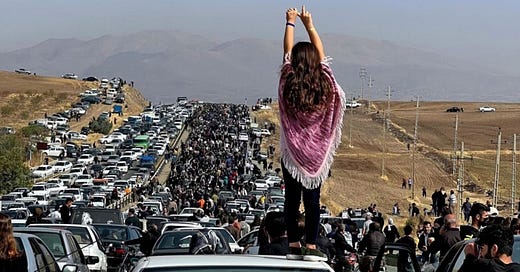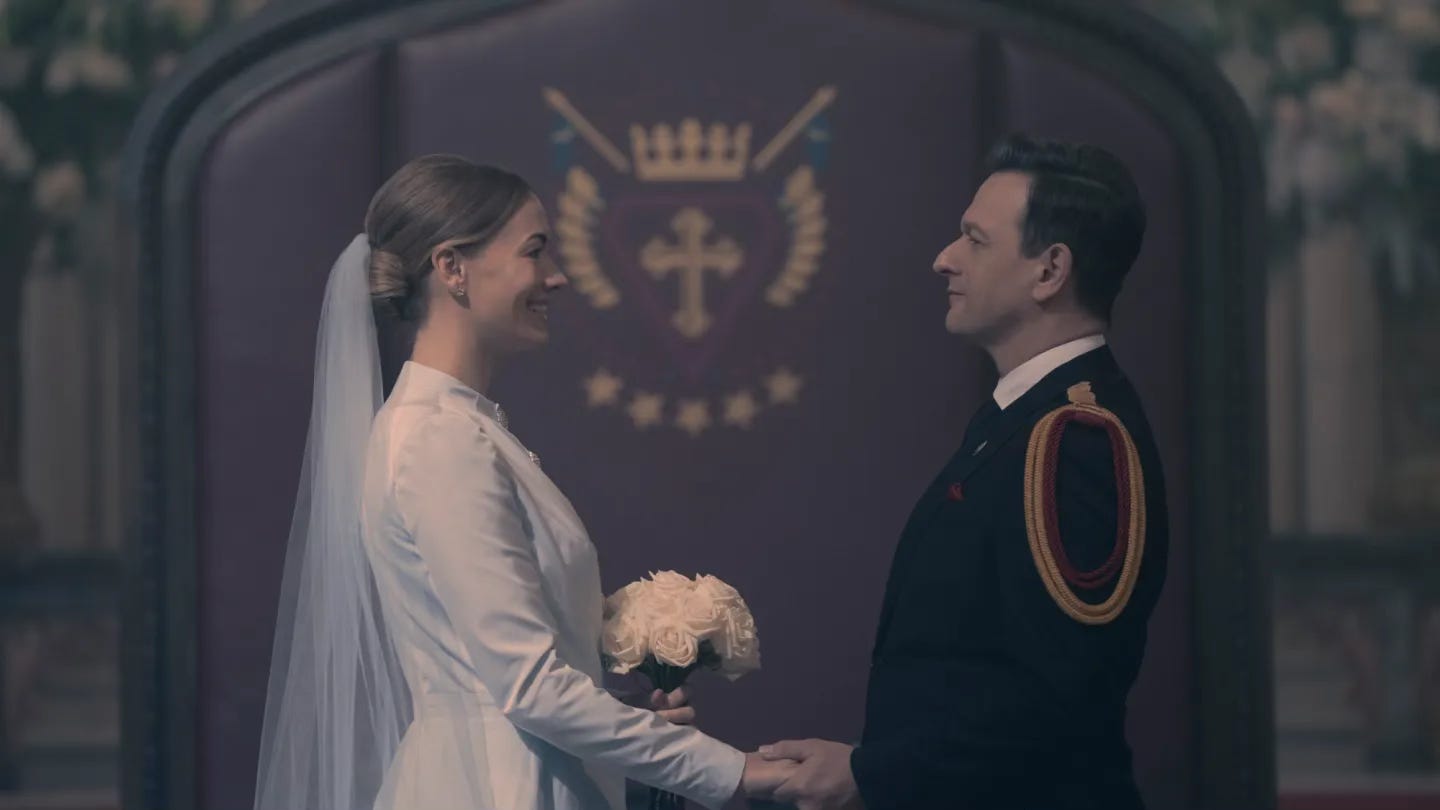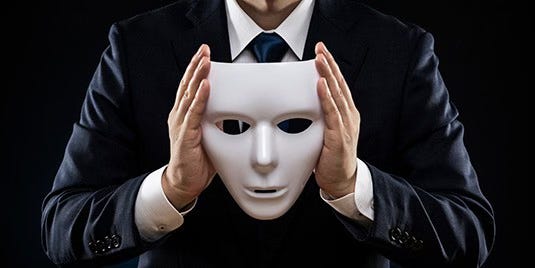The Handmaid's Tale and the Gospel Truth About Patriarchy
How Oppression Makes Victims of Us All
The Handmaid’s Tale isn’t just a dystopian drama—it’s a parable. The red robes and white bonnets are modern-day sackcloth, crying out against the idolatry of patriarchy. In Gilead, power is sacred, submission is divinely mandated, and a woman’s worth is reduced to her womb. It’s disturbing because it feels familiar. It mirrors what happens when patriarchy, left unchecked, becomes not only cultural but cosmic—what theologian William Stringfellow called a “Power” that demands allegiance and mimics divinity.¹
In The Handmaid’s Tale, patriarchy isn’t just a system—it’s a god. And that’s precisely what makes it so dangerous.
Read more on the fight against oppression in Iran happening now.
Margaret Atwood has famously stated that everything depicted in The Handmaid’s Tale is grounded in historical reality.1
“I made a rule for myself: I would not include anything that had not already happened in what I called the real world… I didn’t have to invent anything.”
-Margaret Atwood
This statement underscores the chilling realism of her dystopia—Gilead is not a fantasy, but a collage of historical and contemporary oppression drawn from various cultures and times.
Stringfellow warned that the Powers—institutions, ideologies, even religious structures—become demonic when they claim ultimacy. Gilead’s theology, like all systems of domination, enslaves everyone. Women are brutalized. Men are hollowed out. Children are indoctrinated. The whole society sacrifices its humanity to maintain control.
The scary part?
It’s not fiction for many. As Walter Wink points out, the Domination System has always been with us: a configuration of unjust hierarchies enforced through violence, fear, and manipulation.2 Gilead is a parable, yes—but it is also a mirror.
Wink challenges us to name patriarchy as a spiritual principality—not just a cultural bias, but a collective lie backed by power and ritual. Jesus, Wink says, didn’t merely confront individual sin—he confronted the system.3 That’s what makes his gospel revolutionary. He cast out demons, yes—but also challenged the legal codes, religious hypocrisy, and purity systems that protected power.
The Bible itself contains stories that unmask the violence of patriarchy—and subvert it. One of the most compelling is the story of Hagar, found in Genesis 16 and 21. Hagar is an Egyptian enslaved woman, used by Abram and Sarai to produce a child. She has no agency, no voice, and no protection. And yet, it is Hagar who becomes the first person in Scripture to name God: El Roi —“the God who sees me.” She is also the first woman to receive a direct divine promise of descendants.
God fights patriarchy.
In a culture that viewed her as expendable, God listens to her, sees her, and dignifies her. This is not God condoning the system she was trapped in—this is God actively subverting it. The same Spirit that raised Jesus from the dead speaks to a marginalized, enslaved, pregnant refugee and gives her a future. Hagar becomes a theologian of liberation.
As Delores Williams observes, “God did not rescue Hagar from slavery. God empowered her to survive it.”4 The wilderness becomes not a place of abandonment, but divine revelation. Like The Handmaid’s Tale, her story exposes the myth that patriarchy can be sacred—and reveals that God stands with the oppressed, not the powerful.
This is not about blaming men—it’s about confronting patriarchy. As bell hooks powerfully writes, “Patriarchy has no gender.” Women and men can both uphold it. And both are wounded by it.
The wedding in Season 6 of The Handmaid’s Tale exposing the way both men and women benefit from and are oppressed by Patriarchy.
In The Will to Change, hooks dissects how patriarchy trains men to suppress emotions and equates dominance with strength. “Love,” she writes, “is the only foundation for lasting cultural transformation.”5 That’s not sentimentality—it’s strategy. Radical love is what dismantles systems that depend on fear and control.
Vital Warning:
And here’s where The Handmaid’s Tale gives us a vital warning: systems of oppression are upheld by good intentions. Many of the men in Gilead believe they’re saving civilization. Even some women go along, convinced they’re upholding godliness. It’s chilling—but it’s real.
Howard Thurman saw this clearly. Writing during Jim Crow, he knew what it meant to live “with your back against the wall.”6 In Jesus and the Disinherited, he speaks of the inner toll of oppression—how fear and hate deform the soul. But he also speaks of love as resistance. Not cheap love. Not denial. But a defiant love that refuses to mirror the dehumanization of the oppressor.
“To love,” Thurman writes, “means to commit oneself without guarantee of safe return.”7 In other words, love risks. Love breaks silence. Love names injustice, even when it costs you.
So what does resistance look like today?
It looks like unmasking the idol of patriarchy—whether in pulpits or politics. It looks like confessing complicity and reclaiming tenderness. It looks like empowering survivors and interrogating power. It looks like choosing the gospel over Gilead.
Patriarchy promises order—but delivers death.
The gospel offers life—and calls us to confront the Powers.
Let’s not wait until our communities look like Gilead. Let’s act like Jesus. Let’s name the Powers. Let’s dismantle patriarchy. Let’s love—fiercely, justly, and together.
Margaret Atwood, from the introduction to the 2017 edition of The Handmaid’s Tale
Walter Wink, Naming the Powers: The Language of Power in the New Testament (Philadelphia: Fortress Press, 1984), 4.
Walter Wink, Engaging the Powers: Discernment and Resistance in a World of Domination (Minneapolis: Fortress Press, 1992), 32.
Delores Williams, Sisters in the Wilderness: The Challenge of Womanist God-Talk (Maryknoll, NY: Orbis Books, 1993)
bell hooks, The Will to Change: Men, Masculinity, and Love (New York: Atria Books, 2004), 118.
Howard Thurman, Jesus and the Disinherited (Boston: Beacon Press, 1976), 11.
Ibid., 98.







